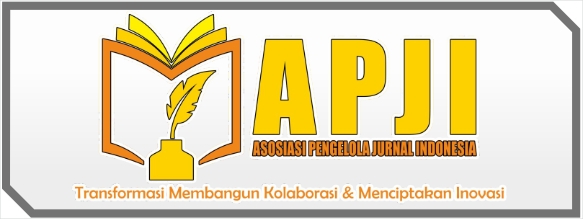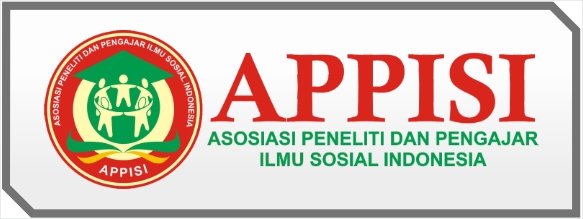Gender-based Value Chain Mapping and Development of the Tempe Business Model in Tenggilis Kauman Surabaya
DOI:
https://doi.org/10.61132/sadewa.v1i3.32Keywords:
peran industri tempe, gender, model bisnis tempe, pemetaan rantai nilaiAbstract
Abstract. The method used in this research is Value Chain Mapping, Gender Sensitivity Value Chain Mapping, and Canvas Business Model. Value Chain Mapping is used to map activities ranging from upstream to downstream from a tempe industry value chain in Tenggilis Surabaya. Gender Sensitivity Value Mapping is used to map and analyze the role of gender in the tempe industry value chain. Whereas the Canvas Business Model is used to redesign the tempe industry business model in Tenggilis Surabaya based on value, gender, and competitive advantage. The results of this study are Value Chain Mapping and Tempe Business Model for the home-based tempe industry. The role of women housewives in the tempe industry value chain in Tenggilis Kauman is almost 50%. For the tempe production system and marketing management for the SME scale, such as the tempe industry in Tenggilis tempe village, the maturity level has reached the optimal level, level 5. For external suppliers, the maturity level is still low at level 2 or still in the development stage. For market orientation, competitors and product development are already at a competitive level. Revenue Streams from the tempe business process in Kampung Tempe is the sale of tempe and its processed products, as well as a tourist visit.
Keywords: gender role, tempe industry, tempe business model, value chain mapping
Abstrac. Metode yang digunakan dalam penelitian ini adalah Value Chain Mapping, Gender Sensitivity Value Chain Mapping, dan Canvas Business Model. Value Chain Mapping digunakan untuk memetakan kegiatan mulai dari hulu hingga hilir dari suatu rantai nilai industri tempe di Tenggilis Surabaya. Gender Sensitivity Value Chain Mapping digunakan untuk memetakan dan menganalisis peran gender dalam rantai nilai industri tempe. Sedangkan Canvas Business Model digunakan untuk mendesain ulang model bisnis industri tempe di Tenggilis Surabaya berdasarkan nilai, jenis kelamin, dan keunggulan bersaing. Hasil dari penelitian ini adalah Pemetaan Rantai Nilai dan Model Bisnis Tempe untuk industri tempe rumahan. Peran ibu rumah tangga dalam rantai nilai industri tempe di Tenggilis Kauman hampir mencapai 50%. Untuk sistem produksi tempe dan manajemen pemasaran skala UKM seperti industri tempe di Kampung Tempe Tenggilis tingkat kematangan sudah mencapai tingkat optimal yaitu tingkat 5. Untuk pemasok eksternal tingkat kematangan masih rendah pada tingkat 2 atau masih dalam tahap pengembangan. Untuk orientasi pasar, pesaing dan pengembangan produk sudah berada pada tingkat kompetitif. Aliran pendapatan dari proses bisnis tempe di Kampung Tempe adalah penjualan tempe dan hasil olahannya, serta kunjungan wisatawan.
Kata kunci: peran industri tempe, gender, model bisnis tempe, pemetaan rantai nilai
References
Asem-Bansah, C., Sakyi-Dawson, O., Ackah-Nyamike, E., Colecraft, E., & Marquis, G. (2012). Enhancing backyard poultry enterprise perfomance in the Techiman area: A value chain analysis. African Journal of Food, Agriculture, Nutrition and Development, 12(49), 5760–5775. doi:10.18697/ajfand.49.enam6
Ardiana, Ardiana and , Ratnanto Fitriadi, ST., MT and , Siti Nandiroh, S.T., M.Eng. (2014) Innovation Business Canvas Model Pada Produk Dholpine Yang Ramah Lingkungan. Skripsi thesis, Universitas Muhammadiyah Surakarta.S
Bask, A. H., Tinnilä, M., & Rajahonka, M. (2010). Matching service strategies, business models and Modular Business Processes. Business Process Management Journal, 16(1), 153–180. doi:10.1108/14637151011017994
David, F. R. (2011). Strategic management: Concepts and cases. Upper Saddle River, NJ: Pretince Hall.
Dijk. (2012). Global value chains: Linking local producers from developing countries to international markets. Amsterdam: Amsterdam University Press.
Hasan, N., Suryani, E., & Hendrawan, R. (2015). Analysis of soybean production and demand to develop strategic policy of Food Self Sufficiency: A system dynamics framework. Procedia Computer Science, 72, 605–612. doi:10.1016/j.procs.2015.12.169
Osterwalder, A., & Pigneur, Y. (2012). Business Model Generation: Membangun Model Bisnis. Jakarta: Elex Media Komputindo.
O’Brien, J. A., & Marakas, G. M. (2011). Management Information Systems. New York: McGraw-Hill/Irwin.
Liebowitz, J. & Beckman, T. 2008. Moving Toward A Knowledge Management Maturity Model (K3M) for Developing Knowledge Management Strategy and Implementation Plans. In: BECERRAFERNANDEZ, I. & LEIDNER, D. (eds.) Knowledge management: an evolutionary view. M.E. Sharpe
Rota. A. International Fund for Agricultural Development (2009): Livestock Thematic Papers, Value chains, linking producers to the markets
Walters, D., & Lancaster, G. (2000). Implementing Value Strategy Through The Value Chain. Emerald.
Downloads
Published
How to Cite
Issue
Section
License
Copyright (c) 2023 Jurnal Sadewa : Publikasi Ilmu Pendidikan, pembelajaran dan Ilmu Sosial

This work is licensed under a Creative Commons Attribution-NonCommercial-ShareAlike 4.0 International License.

















